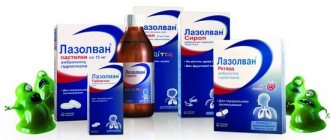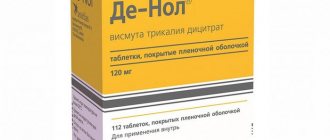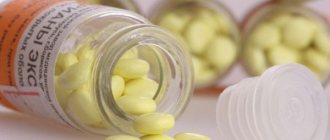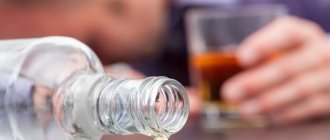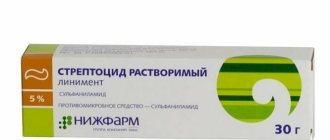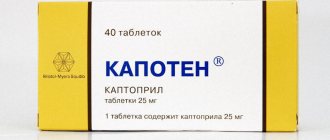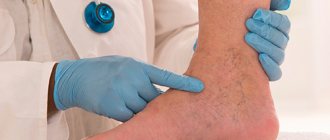Nausea, heaviness and pain in the stomach, heartburn, bloating and other gastrointestinal ailments have become firmly established in the life of modern man. In most cases, these symptoms are provoked by gastritis. According to conservative estimates, more than 40% of the adult population suffers from the disease. A constant lack of time for proper nutrition, snacking on the run, lack of a diet - such a lifestyle only increases the number of sick people. Pharmaceutical companies are constantly forced to develop and release new products to combat pathology.
Unfortunately, sometimes there is not enough time not only for proper nutrition, but also for visiting a gastroenterologist. As a result, people practice self-medication: for symptoms of gastritis, they simply drink any advertised remedy. Then relief comes for the former, while the latter complain that the medications are not effective. Of course, this is the wrong approach to treatment. You should not take medications without a doctor's prescription. When a well-wisher recommends a “proven” remedy, it does not mean that the drug is suitable for everyone. There are different types of gastritis; no universal remedy has been created to combat the disease. Obviously, a correct diagnosis is important for the treatment of gastritis. Only then is it possible to develop an effective treatment strategy.
Diagnosis of gastritis
The article will discuss the treatment of gastritis with high acidity. Inflammation of the mucous membrane occurs due to excessive secretion of gastric juice. It happens to be caused by:
- frequent consumption of spicy, fried, fatty foods;
- drug or chemical effects on the gastric mucosa;
- alcohol and smoking;
- with frequent cases of reflux (reflux of the contents of the duodenum into the stomach);
- infection with the bacterium Helicobacter pylori.
First of all, it is recommended to adjust your diet: give up junk food and switch to food that does not irritate the mucous membranes - small meals, moderate temperature, mainly in liquid and mushy form. Products prohibited during illness include:
- foods that increase acidity (unripe fruits, sour fruits, spices);
- causing flatulence (thick pasta, hard cheeses, scrambled eggs, legumes);
- causing a feeling of heaviness (fatty meats, flour products);
- alcoholic and carbonated drinks, strong brewed tea and coffee.
If you are sick, it is recommended to get more rest, not to overwork, and avoid stressful situations. Alternative medicine offers popular recipes to alleviate gastritis with high acidity:
- tea based on rose hips or sea buckthorn;
- propolis tincture;
- gastric collection from a mixture of medicinal herbs mixed in equal proportions (celandine, chamomile, yarrow, St. John's wort);
- decoction of flaxseeds;
- fresh carrot juice.
Drug therapy is based on the use of proton pump inhibitors (PPIs). PPIs are used to treat most acid-related diseases. The principle of action is to prevent the synthesis of hydrochloric acid, which reduces the level of acidity of gastric juice. If the disease is caused by the bacterium Helicobacter pylori, a course of antibiotics is required.
Composition and release form
Manufacturers produce Nolpaza in the form of enteric tablets and a solution for parenteral administration. Primary packaging of the drug is blisters with contour cells or sealed glass bottles. The dry substance for preparing the dilution is a light powder that can be compressed. This does not in any way affect its therapeutic properties, provided Nolpaza is stored in a place protected from light.
Solid dosage forms of drugs are presented in two types:
- tablets 20 mg No. 14, No. 28 and No. 56;
- tablets 40 mg No. 14, No. 28 and No. 56.
The tablets are coated, which protect the active substance Nolpaza pantoprazole from the aggressive effects of digestive enzymes. This allows the drug to penetrate the cavity of the gastrointestinal tract and exhibit maximum therapeutic effect. Auxiliary ingredients for forming tablets include:
- sorbitol;
- sodium carbonate;
- calcium stearate.
- propylene glycol;
- titanium dioxide.
Secondary packaging of any dosage form of Nolpaza is a cardboard box with an annotation inserted inside.
However, it is worth considering the following differences
- The first drug has a more aggressive effect on the acidic environment, while Nolpaza has a milder effect, without affecting the gastric mucosa.
- Unlike Nolpaza, long-term use of Omez is undesirable, because it has side effects (nausea, dizziness, dry mouth).
Greetings to all!
Nolpaza or Omez, which is better? I asked myself this question when I came home after examining the fibrogastroduodenoscope. I have had gastritis for a long time, I try to treat the disease at the first exacerbation, I usually prescribed Omez, De-Nol, Almagel, all these drugs helped a lot in their time.
This time I learned from the doctor about the drug Nolpaza
, I was only scared off by the price; unlike the cheap Omez, it varies greatly. I preferred Nolpaza because I trust the doctor who prescribed these pills for me. The gastroenterologist knows better, because he saw my stomach from the inside.
My therapist, having seen the gastroenterologist’s conclusion and a prescription for pills, advised me to replace the expensive Nolpaza with Omez. I must say, I took Omez before, and decided to be treated with Nolpaza this time, in the hope of being cured once and for all. And the therapist is not an authority on this matter for me.
Price of tablets: 271 RUR for 28 tablets of 20 mg
RUR 242 for 14 tablets of 40 mg
Nolpaza analogues: Controloc, Sanpraz, Panum.
Compound:
Indications:
Contraindications:
It’s been a long time since my stomach hurt so bad; when there is no exacerbation for a long time, I begin to allow myself not entirely healthy foods. This time, the reason for the worsening of gastritis was over-salted cheese...
I needed a quick result, because my stomach hurt quite a bit. I always expected instant relief from unpleasant symptoms from antacids, from Nolpaza
Naturally, I didn’t expect a quick recovery.
I was prescribed Nolpaza 1 tablet per day, in the morning 30 minutes before meals, 40 mg. In very advanced cases, 2 tablets may be needed. The duration of treatment is 5 weeks.
I felt relief on the 4th day, strength began to appear, the blush on my cheeks returned. And the further, the better, I gained a little weight, apparently, the nutrients finally began to be fully absorbed. This is a completely different quality of life!
The list of side effects is impressive, I didn’t experience any symptoms, and I tolerated such a long-term treatment very well.
Gastritis is a very common disease and is often asymptomatic. Check your stomach on time and you will be happy!
Nolpaza is an antiulcer drug. This drug inhibits the enzyme H + /K + -ATPase in gastric parietal cells and thereby blocks the final period of hydrochloric acid synthesis. As a result, the level of stimulated and basal secretion of hydrochloric acid decreases, regardless of the nature of the stimulus. After the drug is taken orally once in a dosage of twenty milligrams, the effect of pantoprazole is activated during the first hour, and the maximum effect will be achieved after two or two and a half hours. The drug has no effect on gastrointestinal motility. As soon as the medication is stopped, its secretory activity is restored in full after three to four days. We will consider Russian analogues of Nolpaza in this article.
pharmachologic effect
When prescribing Nolpaza to patients for gastritis, gastroenterologists take into account the drug’s ability to enhance the effect of antibacterial agents. This is relevant when diagnosing diseases caused by the bacteria Helicobacter pylori. To eradicate them from the gastrointestinal tract, antibiotic therapy is carried out. In combination with Nolpaza, the bactericidal effect of antimicrobial agents is significantly enhanced.
Warning: Before using Nolpaza, the gastroenterologist conducts a thorough examination of the patient, including instrumental studies - MRI, ultrasound, fluoroscopy. This is necessary to exclude the patient from having malignant tumors in the organs of the digestive system. Taking Nolpaza will quickly eliminate the symptoms of formed tumors, which will complicate the diagnosis and lead to the progression of the pathology.
Pharmacodynamics
Nolpaza is a hypoacid drug belonging to the group of proton pump inhibitors. The active substance of the pharmacological drug inhibits the functioning of the enzymatic compound H+/K+ATPase. Pantoprazole is metabolized only in an acidic environment into a therapeutically active form. It prevents the formation of a hydrochloric acid molecule at the final stage of its production. Blocking secretion does not depend on the method of producing gastric juice - basal or stimulated.
Recommendation: Like all proton pump inhibitors, Nolpaza reduces the absorption of cyanocobalamin. To prevent vitamin deficiency, gastroenterologists prescribe additional vitamin B12 to patients undergoing long-term therapy.
The use of Nolpaza enhances the production of a hormone produced by stomach cells located in the pyloric region, as well as G-cells of the pancreas. After recovery, gastrin levels return to normal, as does the functioning of the entire gastrointestinal tract. Reducing the concentration of caustic acid promotes the rapid restoration of damaged mucous membranes and the regeneration of epithelial cells.
Nolpaza quickly eliminates the symptoms of increased stomach acidity - heartburn and pain
Pharmacokinetics
After the active substance Nolpaza penetrates the gastrointestinal tract, the therapeutic effect begins to appear after 45-60 minutes. The maximum concentration of the drug is detected in the bloodstream after 2.5-3 hours. If for any reason the patient stops using the drug, the secretion of hydrochloric acid by glandular cells is restored within 4 days. Nolpaza is quickly absorbed by the gastric walls without affecting the following functions of the digestive system:
- motor motility of the gastrointestinal tract;
- peristalsis and frequency of bowel movements.
Nolpaza is characterized by high bioavailability (more than 75%), which is taken into account by gastroenterologists when prescribing the drug to patients with low functional activity of the urinary organs and liver. Taking the medicine on a full stomach does not reduce the concentration of the main substance, but only slightly delays the onset of action. Nolpaza is metabolized by hepatocytes, and then it is excreted from the body in the form of large conglomerates along with feces.
Analogs
More often the drug is compared with another proton pump inhibitor – Omez. Nolpaza has a number of advantages:
- Nolpaza for gastritis acts more gently and sparingly for the gastric mucosa;
- in exceptional cases used during pregnancy and lactation;
- has a wider spectrum of action;
- has a smaller list of contraindications and side effects.
If, for established reasons, the use of Nolpaza is limited, it is possible to use analogues whose active substance and mode of action are the same:
- pantasan in the form of tablets and powder;
- Ulsepan;
- control;
- pantap;
- lansazole
You should always follow the recommended dosage; you should not prescribe a drug yourself, even with a similar effect.
Indications for use
Despite the fact that Nolpaza is an antiulcer drug, gastroenterologists successfully use the drug in the treatment of various diseases that occur against the background of excessive production of hydrochloric acid. Such pathologies include many forms of chronic gastritis. The active substance of tablets and injection solutions helps not only to quickly eliminate negative symptoms, but also to prevent exacerbations of gastric diseases. What else does Nolpaza help with? These tablets are used in the treatment of the following pathologies:
- esophagitis and gastroesophageal reflux disease of various etiologies, accompanied by the reflux of acidic stomach contents back into the esophagus;
- symptoms of a digestive system disorder - sour belching, painful heartburn, pain in the epigastric region, flatulence;
- ulcerative lesions of the digestive tract and prevention of their relapses;
- acute and chronic gastritis, provoked by the penetration of gram-negative bacteria Helicobacter pylori into the digestive organs as part of complex therapy along with antibiotics and antimicrobial agents;
- Zollinger-Ellison syndrome and other diseases accompanied by increased acidity of gastric juice.
Non-steroidal anti-inflammatory drugs are used in the treatment of many chronic diseases, especially the musculoskeletal system. They prevent the development of the inflammatory process and reduce the severity of pain. But NSAIDs have a serious drawback - capsules and tablets ulcerate the gastric mucosa. Nolpaza helps prevent events from developing in such a negative scenario. It protects the walls of the digestive organs from the effects of NSAIDs without affecting their therapeutic effect.
How Nolpaza interacts with other drugs
Nolpaza reduces the effectiveness of drugs activated by high levels of gastric acidity. These include ketoconazole, itraconazole, posaconazole, aspirin, etc.
Nolpaza reduces the effectiveness of antiviral drugs used for HIV infections. The effectiveness of drugs such as atazanavir, the absorption of which depends on the acid-base balance, decreases while taking Nolpaza. Therefore, these medications should not be combined.
Side effects:
- Allergic reaction - skin rashes, itching, urticaria, anaphylactic shock;
- From the central nervous system: dizziness, headaches, loss of coordination, blurred vision;
- From the gastrointestinal tract: loose stools, bloating, excessive gas formation, nausea;
- In this case, joint pain, swelling, and fatigue are also possible. With long-term use, a decrease in the level of leukocytes (Leukopenia) and platelets (Thrombocytopenia) occurs.
The approximate cost of domestically produced Nolpaza varies:
- Nolpaza with a dosage of 20 mg, in a volume of 14 tablets - about 130 - 160 rubles.
- Nolpaza with a dosage of 40 mg, in a volume of 14 tablets - about 200 - 260 rubles.
Controloc is an analogue of Nolpaza.
If your pharmacy does not have Nolpaza, there is something to replace them with. Analogs with the same active ingredient include:
- Control;
- Peptazol;
- Ulthera;
- Zypantol and others.
There are also drugs that act similarly, but with a different active substance. These include: Ultop, Dexilate, Omez Insta, Pariet, Nexium, Omeprazole.
Nolpaza may reduce the effectiveness of the following drugs:
- A group of drugs whose absorption directly depends on the degree of stomach acidity. These include antifungal dosage forms (Ketoconazole, Itraconazole).
- Pharmacological group that is prescribed for the treatment of HIV-infected patients.
- Coumarin anticoagulants (Phenprocoumon or Warfarin).
Some drugs, on the contrary, become more active when Nolpaza is prescribed:
- Patients undergoing treatment for cancer with Methotrexate should stop using this drug during treatment with Nolpaza. Due to the fact that it is capable of increasing its concentration in the bloodstream.
- When using antibacterial therapy, Nolpaza potentiates the effect of antibacterial agents.
This medicine does not have a significant effect when taken:
- Diclofenac and Dicloberla.
- Digoxin.
- Caffeine.
- Infinom.
- Piroxicam.
- Theophylline.
- Oral contraception.
Parallel use of Pantoprazole and antacids is allowed. It is also possible to prescribe it together with antibiotics.
Instructions for use
Daily, single dosages, as well as the duration of the course of treatment are determined only by the doctor. The gastroenterologist focuses on the results of laboratory and instrumental studies. Of no small importance is the age and general health of the patient, the presence of pathologies of the liver and kidneys in the anamnesis.
Warning: Nolpaza tablets should not be chewed or crushed, otherwise their therapeutic effect will be greatly reduced. The drug must be swallowed whole with a sufficient amount of clean water.
The action of Nolpaza does not depend on the presence of food in the gastrointestinal tract, but the optimal time for taking tablets is considered to be the morning, a few minutes before breakfast. If the doctor recommended a two-time dose, then it is better to take the second tablet before dinner. The dosage of Nolpaza prescribed to a specific patient depends on the purpose of using the drug:
- to prevent relapses of ulcers and gastritis, it is enough to take the minimum dose once a day;
- in case of serious pathologies, the daily dose may be increased, as well as the frequency of administration.
In patients with diagnosed diseases of the urinary system, single and daily dosages are reduced as much as possible. This is due to the possible accumulation of the active substance Nolpaza in tissues and increased unwanted side effects.
Dosage
For the previously mentioned mild diseases, accompanied by heartburn and pain when swallowing food, one 20 mg tablet of the drug per day is prescribed. Gastroesophageal reflux diseases and other moderate and severe ailments require an increased dosage of the drug. Thus, the patient is prescribed 2 pills per day, 40 mg each.
For ulcers of the stomach and the initial part of the small intestine, located immediately after the pylorus, which arose after treatment with non-steroidal drugs that relieve inflammation, one or two tablets are prescribed at a dosage of 40 mg. The duration of therapy for gastric ulcers can vary from a month to two. If it is necessary to prevent erosive formation that has arisen while taking non-steroidal drugs that eliminate the inflammatory process in the body, the patient may be prescribed 20 mg per day.
When diagnosing Helicobacter pylori eradication in a patient, the doctor prescribes one 40 mg tablet in the morning and evening along with antibiotics. The duration of treatment is a week or two. For pathological increases in gastric secretion, the course of therapy is long and begins with the use of two 40 mg tablets per day. The physician may then adjust the dosage based on changes in the initial level of gastric secretion. In some cases, the patient may be prescribed a daily dose of 160 mg.
When observing serious pathologies in the functioning of the liver in a patient, the dosage of pantoprazole should not be more than 40 mg per day, and constant monitoring of the activity of enzymes in this organ is required, which is most important during a long course of therapy. If observations show an increase in enzymes, then this drug should be abandoned.
Contraindications
For patients with individual sensitivity to the active substance or auxiliary ingredients, the drug is not prescribed due to the possible development of allergic reactions. Contraindications for Nolpaza also include:
- lack of an enzyme in the body that breaks down fructose;
- age under 18 years;
- dyspeptic disorders of neurotic etiology;
- pregnancy and breastfeeding period.
Nolpaza is not used in conjunction with antibacterial drugs in the treatment of patients with kidney and liver pathologies. Such patients can take the drug as a single component only with constant monitoring of liver enzyme levels.
Pharmacology
The active ingredient in the drug “Nolpaza” is pantoprazole, which is capable of blocking the concentration of acid in the gastric juice. It takes its active form in an acidic environment and blocks the enzyme hydrogen-potassium adenosine triphosphatase, or rather, the release of chemical compounds from hydrochloric acid cells into the stomach. Therapy with drugs based on pantoprazole allows not only to reduce the acidity of the stomach, but also to increase the secretion of gastrin, which activates the digestion process. The effectiveness of the drug is the same both when used orally and when administered intramuscularly or intravenously.
The elimination time is 60 minutes, but in some cases this figure may be increased. Pharmacokinetics remains the same without changes with single or multiple use of the drug. Pantoprazole is 98% bound to blood proteins. The active substance is almost completely broken down in the liver and is finally excreted from the body by the kidneys or with feces.
Oral administration of a drug based on pantoprazole allows the substance to be completely absorbed. When administered orally, the drug is absorbed by 77%. Eating food does not affect the pharmacokinetic parameter, which characterizes the total concentration of the drug in the blood plasma throughout the observed time.
Side effects
Very rarely, with long-term treatment with Nolpaza, cases of the development of renal failure and destructive lesions of liver tissue, including jaundice, have been reported. Sometimes patients complain of the following side effects of Nolpaza:
- excessive gas formation, bloating, vomiting;
- peristalsis disorder;
- pain in muscles and joints;
- nephritis of neurogenic origin;
- allergic reactions: urticaria, skin itching, redness and rashes on the upper layer of the epidermis under the influence of sunlight, erythema;
- pain in the mammary glands;
- hyperthermia;
- swelling of various localizations.
Side effects may also occur on the nervous system: sleep disturbance, lethargy, apathy, emotional lability, dizziness.
You can replace Nolpaza with a drug with the same active ingredient
